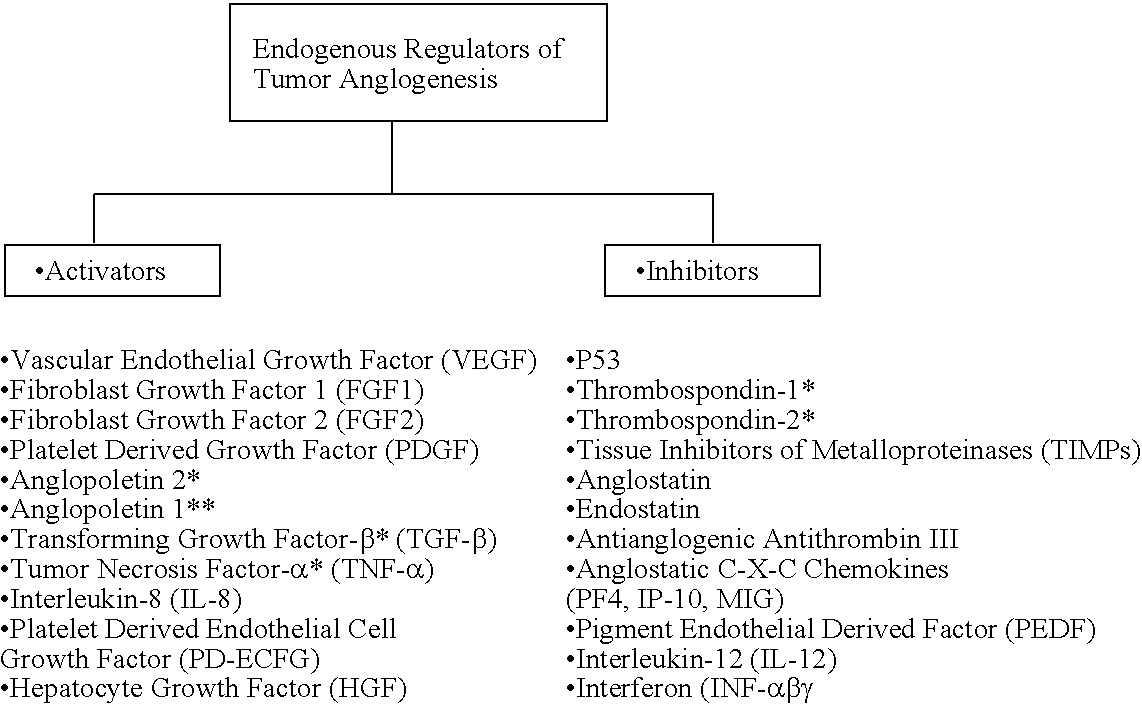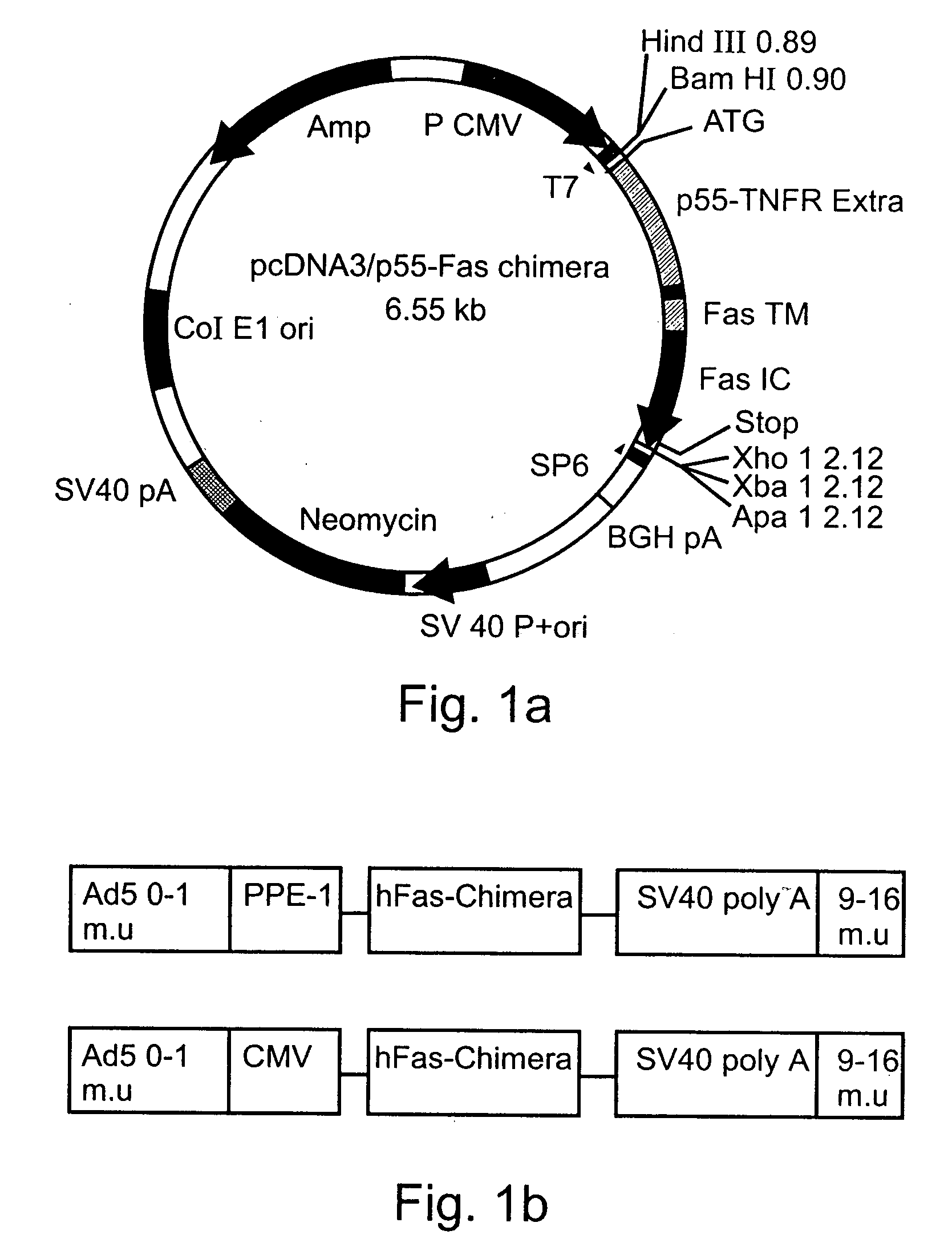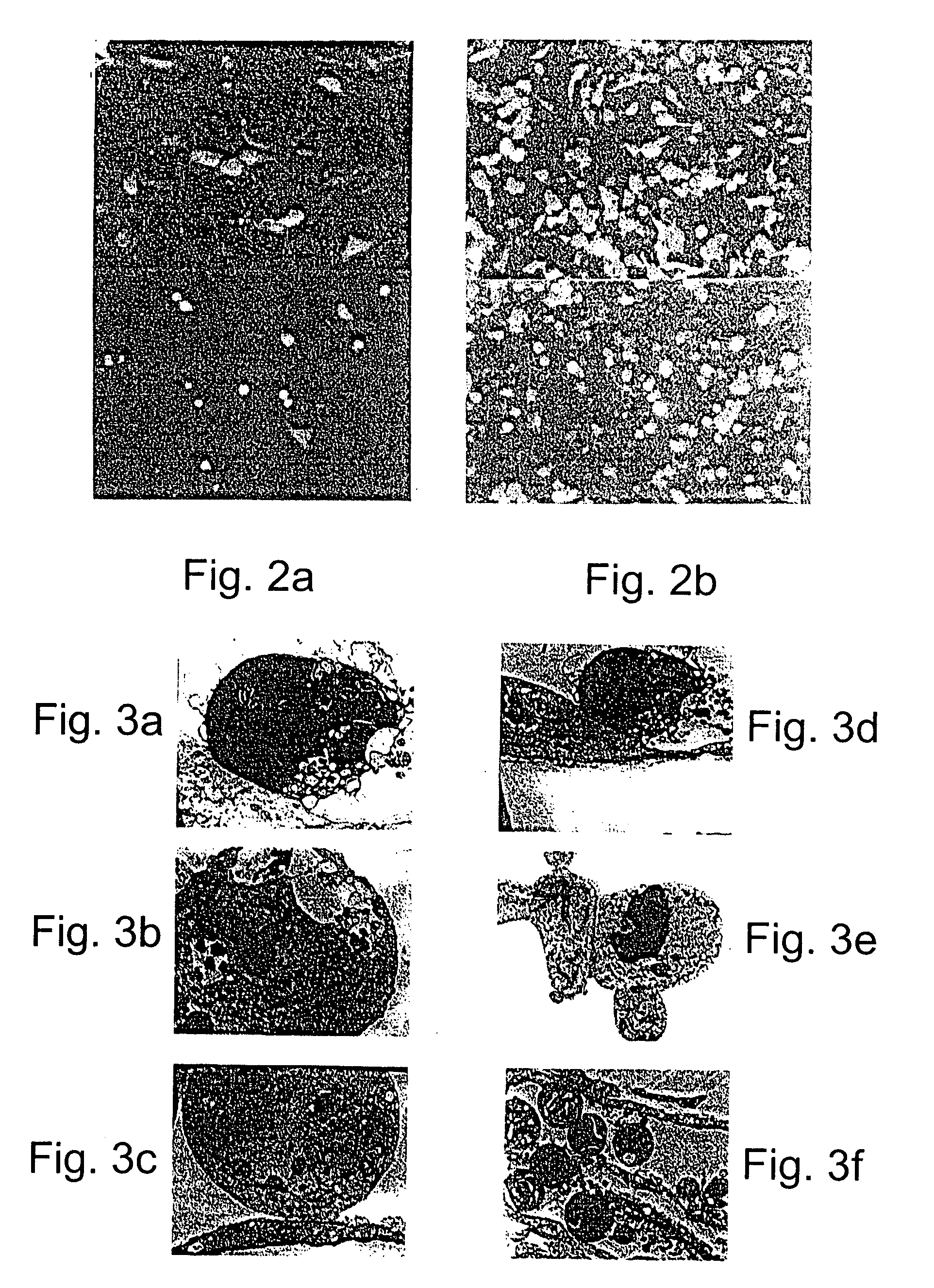Promoters exhibiting endothelial cell specificity and methods of using same for regulation of angiogenesis
- Summary
- Abstract
- Description
- Claims
- Application Information
AI Technical Summary
Benefits of technology
Problems solved by technology
Method used
Image
Examples
example 1
In-Vitro Assay for Pro-Apoptotic Gene Activity in Eitdothelial Cells (BAEC) and 293 Cells
[0401] In cancer treatment, anti-angiogenic therapy targets the evolving vasculature which nourishes the growing tumor [Folkman J. N Engl J Med (1995) 333(26):1757-63]. As the research of apoptosis, or programmed cell death, has progressed, numerous genes that encode selective and efficient cell death regulators have been identified [Strasser et al. Annu Rev Biochem (2000) 69:217-45.].
[0402] The present study screened several pro-apoptotic genes in order to identify an agent most suitable for anti-angiogenic therapy. Several pro-apoptotic genes including MORTI (FADD—Fas associated death domain protein, GenBank Accession number NM—003824), RIP (receptor-interacting-protein, GenBank Accession number U25995), CASH (c-FLIP, GenBank Accession number AF010127), MACH (caspase 8 GenBank Accession number X98172), CPP32 (caspase 3, GenBank Accession number U13737), caspase 9 (U60521) and Fas-chimera (Fa...
example 2
Production of Recombinant Adenoviruses Encoding Fas-Chimera Under the Control of the Modified PPE-1 Promoter (PPE-1(3×))
[0404] A cDNA encoding a full length Fas-chimera was subcloned into the plasmid pPACPPE1-3× containing the modified pre-proendothelin1 promoter (see FIG. 1b). Recombinant adenoviruses were produced by co-transfection of this plasmid with pJM17 plasmid into human embryonic kidney 293 cells. Successful viral cloning was verified via PCR amplification (FIG. 5a).
[0405] In order to determine the expression of Fas-c in the target cells, endothelial BAEC cells were transduced with the indicated titer of Ad-PPE-1(3×)-Fas-c. 72h post transduction cells were lysed and cellular proteins resolved using a non-reducing SDS-PAGE gel. Western blot analysis was performed using anti-TNFR1 antibody (Sc-7895, Santa-Cruz Biotech). As demonstrated in FIG. 5b, a prominent band migrating at 45 kD was clearly evident and its expression was dose-dependent, suggesting correct folding and e...
example 3
Ad-PPE-1(3×)-Fas-c Expression Induces Apoptosis in Endothelial Cells
[0406] The ability of Ad-PPE-1(3×)-Fas chimera to induce apoptosis of endothelial cells was determined. As shown in FIGS. 6a-b, pre-proendothelin directed, adenovirus-mediated transduction of endothelial cells resulted in an evident and massive cell death; HUVEC and BAEC infected with Ad-PPE-1(3×)-Fas-c (103 MOI) had morphological features of adherent cells undergoing apoptosis including membrane blebbing, rounding and shrinking and detachment from the culture dish. In contrast, cells infected with control viruses at the same MOI, maintained normal appearance and growth rate. Cells transduced with 100 MOI presented only a minimal degree of cell death (data not shown).
[0407] Further assessment of the cytotoxic properties of Ad-PPE-1(3×)-Fas-c was effected by expressing this virus in cells expressing the reporter gene GFP under the control of the PPE-1 promoter. As is evident from FIGS. 6c-d, most of the transduced ...
PUM
| Property | Measurement | Unit |
|---|---|---|
| Adhesion strength | aaaaa | aaaaa |
| Cytotoxicity | aaaaa | aaaaa |
| Chemotherapeutic properties | aaaaa | aaaaa |
Abstract
Description
Claims
Application Information
 Login to View More
Login to View More - R&D
- Intellectual Property
- Life Sciences
- Materials
- Tech Scout
- Unparalleled Data Quality
- Higher Quality Content
- 60% Fewer Hallucinations
Browse by: Latest US Patents, China's latest patents, Technical Efficacy Thesaurus, Application Domain, Technology Topic, Popular Technical Reports.
© 2025 PatSnap. All rights reserved.Legal|Privacy policy|Modern Slavery Act Transparency Statement|Sitemap|About US| Contact US: help@patsnap.com



